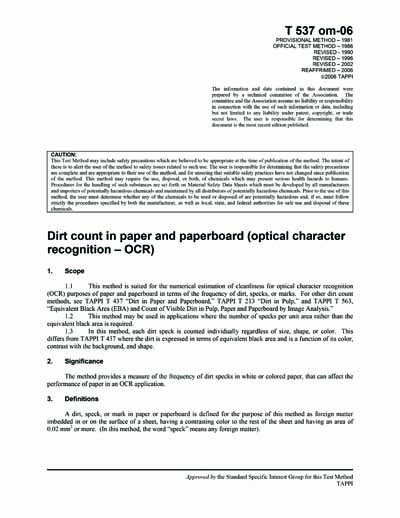Historical
TAPPI T 537 om-06
Dirt count in paper and paperboard (optical character recognition - OCR)
- This method is suited for the numerical estimation of cleanliness for optical character recognition (OCR) purposes of paper and paperboard in terms of the frequency of dirt, specks, or marks. For other dirt count methods, see TAPPI T 437 "Dirt in Paper and Paperboard," TAPPI T 213 "Dirt in Pulp," and TAPPI T 563, "Equivalent Black Area (EBA) and Count of Visible Dirt in Pulp, Paper and Paperboard by Image Analysis."
- This method may be used in applications where the number of specks per unit area rather than the equivalent black area is required.
- In this method, each dirt speck is counted individually regardless of size, shape, or color. This differs from TAPPI T 437 where the dirt is expressed in terms of equivalent black area and is a function of its color, contrast with the background, and shape.
Content Provider
Technical Association of the Pulp and Paper Industry [tappi]






